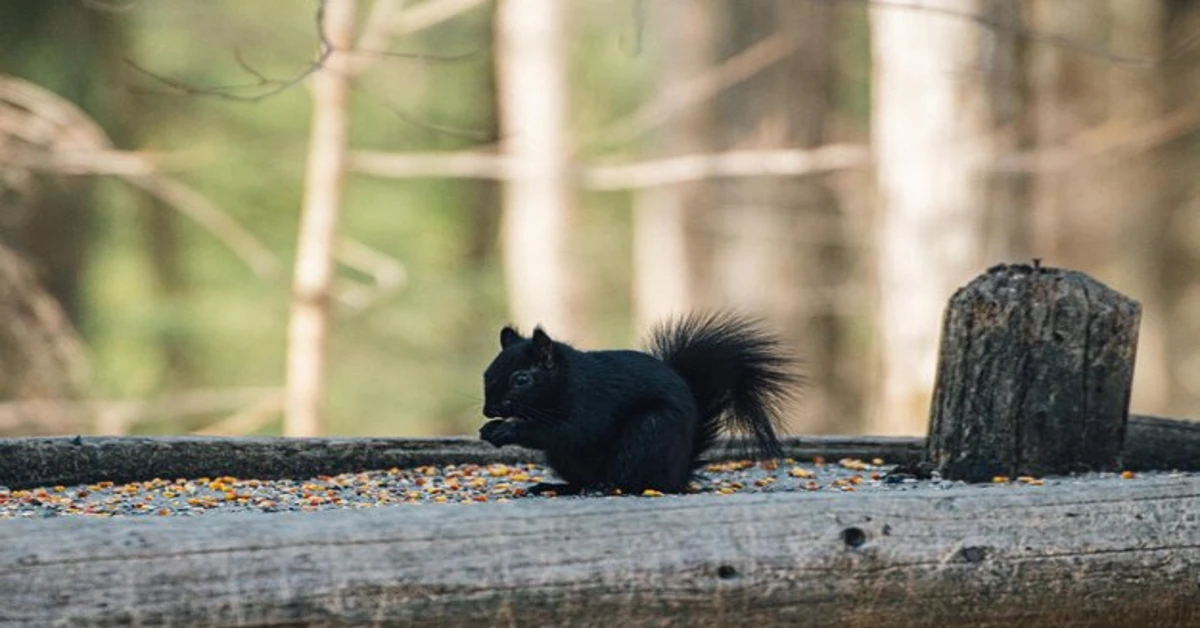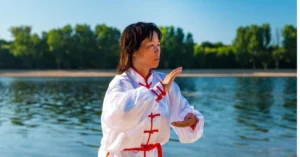In the world of wildlife, few creatures capture our imagination quite like the enigmatic black squirrel. With their sleek coats and nimble movements, these furry friends often evoke a sense of mystery. They dart through parks and gardens with an uncanny grace, making them seem almost otherworldly—like nature’s little ninjas.
But what is it about black squirrels that makes them so captivating? Are they simply a darker version of their gray cousins, or do they possess unique traits that set them apart? Join us as we delve into the fascinating world of black squirrels, exploring their distinct characteristics, cultural significance, and even some surprising benefits tied to their striking fur. Whether you’re a seasoned wildlife enthusiast or just curious about these charming creatures in your backyard, there’s much more to discover than meets the eye!
Description
Black squirrels are a captivating variation of the common tree squirrel. Their distinctive black fur, which can range from glossy jet-black to deep charcoal, sets them apart from their more familiar gray and brown counterparts. This striking coloration gives them an air of mystery as they navigate through urban parks and wooded areas.
Typically weighing between 1 to 1.5 pounds, black squirrels still retain the agile build that allows them to climb trees effortlessly. They have large bushy tails that help with balance while leaping among branches or scurrying across power lines. Those fluffy appendages also serve another purpose: keeping warm during colder months.
In terms of size, black squirrels are similar to other species within the Sciurus genus. Their bodies measure around 9 to 10 inches long, not including their equally lengthy tails—often reaching up to a foot in length! With bright eyes and twitching noses, they exude a playful curiosity that’s hard not to love.
Their behavior often mirrors that of gray squirrels; they’re known for collecting nuts and seeds for winter storage. Observing these lively creatures in action reveals both intelligence and adaptability in various environments.
Differences with non-melanistic squirrels
Black squirrels stand out for their striking appearance, which is primarily due to a genetic mutation that causes an excess of melanin. This differs significantly from the common gray or red squirrel, both of which have lighter coats. While these non-melanistic squirrels boast shades ranging from soft browns to bright reds, black squirrels sport a sleek ebony hue that often catches the eye.
Besides color, behavior can also vary between the two types. Black squirrels tend to be more aggressive in protecting their territory and food sources compared to their lighter counterparts. Their darker fur may give them an edge in urban environments where they are known to thrive amidst human activity.
In terms of adaptability, black squirrels are often found in similar habitats as other species but seem better suited for colder climates. Their dense fur provides additional insulation during chilly months when survival becomes crucial.
When it comes to size, there isn’t much difference; however, some studies suggest that melanistic individuals might possess slightly larger body sizes over time due to evolutionary advantages linked with predation pressures and environmental factors.
Distribution
Black squirrels are primarily found in North America, although their range extends into parts of Europe and Asia. In the United States and Canada, they thrive in urban parks, wooded areas, and suburban neighborhoods. Their adaptability to diverse habitats makes them a common sight in many regions.
Interestingly, black squirrels have a patchy distribution across various states. While they are prevalent in the Midwest and northeastern U.
S., you’ll find fewer populations on the West Coast. Some cities have even embraced these charming creatures as local icons, leading to increased sightings over time.
In Canada, black squirrels are particularly abundant in Ontario’s forests and urban settings. The cold climate doesn’t deter them; instead, it contributes to their striking fur color due to natural selection favoring darker coats for warmth.
Across other continents like Europe, introduced populations exist but remain limited compared to native gray or red squirrel species. This scattered presence showcases how environmental factors play a role in where these enchanting creatures call home.
In culture
The black squirrel has woven itself into various cultural narratives and folklore. In many communities, these sleek creatures are seen as symbols of mystery and adaptability. Their striking appearance often leads to stories that celebrate their uniqueness, invoking a sense of wonder among nature lovers.
In some Native American cultures, squirrels represent preparation and resourcefulness. The contrast between the black furred variety and traditional gray squirrels adds an element of intrigue to these tales. These fascinating animals have sparked creativity in literature and art throughout history.
Social media has amplified interest in black squirrels, making them viral sensations across platforms like Instagram and TikTok. Photogenic poses captured by enthusiasts showcase their playful antics, further embedding them into modern culture. Memes featuring these charming rodents circulate widely, highlighting society’s fascination with their enigmatic presence.
Many universities have adopted the black squirrel as a mascot or symbol due to its distinctive traits. This connection generates school spirit while celebrating local wildlife diversity. As a result, for students and alumni alike, the image of the black squirrel evokes pride within academic circles.
Benefits of black fur
The striking black fur of black squirrels isn’t just for show. It offers several practical benefits in the wild. One key advantage is camouflage. In densely wooded areas, their dark coats help them blend into the shadows, making it harder for predators to spot them.
Black fur also provides insulation against the cold. During frigid winters, a thicker coat helps retain warmth, giving these creatures an edge over their lighter-colored relatives. This adaptation allows them to thrive in regions where temperatures dip significantly.
Additionally, melanin-rich fur can have protective properties against UV radiation. Black squirrels are less susceptible to sunburn and skin damage compared to more lightly pigmented animals. This trait may contribute to their longevity and overall health.
Moreover, there’s something captivating about their appearance that fascinates onlookers and nature enthusiasts alike. The mysterious allure of a sleek black squirrel darting through trees adds intrigue to any park or forest scene, sparking curiosity about its lifestyle and habits while reminding us of nature’s diversity.
Reproduction
Black squirrels, like their non-melanistic counterparts, have a fascinating reproductive cycle. Breeding typically occurs twice a year; once in late winter and again in midsummer. This timing helps ensure that young can thrive when food is plentiful.
Gestation lasts about 44 days, after which the female gives birth to a litter of two to six kits. These tiny creatures are born blind and hairless, completely dependent on their mother for warmth and nourishment. The nurturing period is crucial as it lays the foundation for strong survival instincts.
As they grow, black squirrel kits begin venturing out of the nest around six weeks old. They start exploring their surroundings while still relying on mom for guidance and protection from predators. It’s quite an adorable sight to see them playfully chasing each other or gathering acorns under her watchful eye.
By three months of age, these little ones gain independence and begin forging their own territories. The transition marks an important milestone in their lives as they adapt to the challenges of nature’s playground—a world filled with opportunities waiting just around every tree trunk.
Introduced populations
Black squirrels, primarily found in North America, have also made their way to various other regions. In some cases, these charming creatures were introduced purposefully for sport or aesthetic reasons. Their striking appearance quickly captured the attention of wildlife enthusiasts and casual observers alike.
In places like England and Canada, black squirrels have established themselves alongside their gray counterparts. This introduction has sparked curiosity about how they adapt to different environments and whether they affect local ecosystems. Some studies suggest that black squirrels may even outcompete gray ones in urban settings due to their bold nature.
Interestingly, the adaptability of black squirrels allows them to thrive in diverse habitats ranging from parks to wooded areas. They often blend into cityscapes while maintaining a playful demeanor that engages residents and visitors. Observing them can bring a sense of connection with nature amidst urban life.
These introduced populations continue to raise questions among ecologists regarding genetic diversity and interspecies competition. As more people become aware of these remarkable animals, it’s essential to understand the implications of their presence beyond mere fascination.
Literature
The black squirrel has captured the imagination of writers and poets alike. Its unique appearance and elusive behavior have inspired countless stories, myths, and anecdotes. In literature, these creatures often symbolize mystery or adaptability.
Authors like Mark Twain referenced them in their work, highlighting how they embody both playfulness and resourcefulness. The contrast between black squirrels and their lighter counterparts serves as a metaphor for duality—the balance between lightness and darkness in nature.
In folklore, black squirrels sometimes represent good luck or protection against evil spirits. This cultural significance adds depth to their presence in various communities across North America.
As more people become aware of the enchanting quirks of this creature through literary references, appreciation for its role in our ecosystem grows stronger. Writers continue to explore themes surrounding biodiversity by featuring these captivating animals.
Whether mentioned in whimsical tales or serious ecological discussions, the black squirrel remains an emblematic figure that intrigues readers everywhere. As we delve deeper into understanding nature’s wonders, it’s clear that there’s more than meets the eye with these charming little beings.









